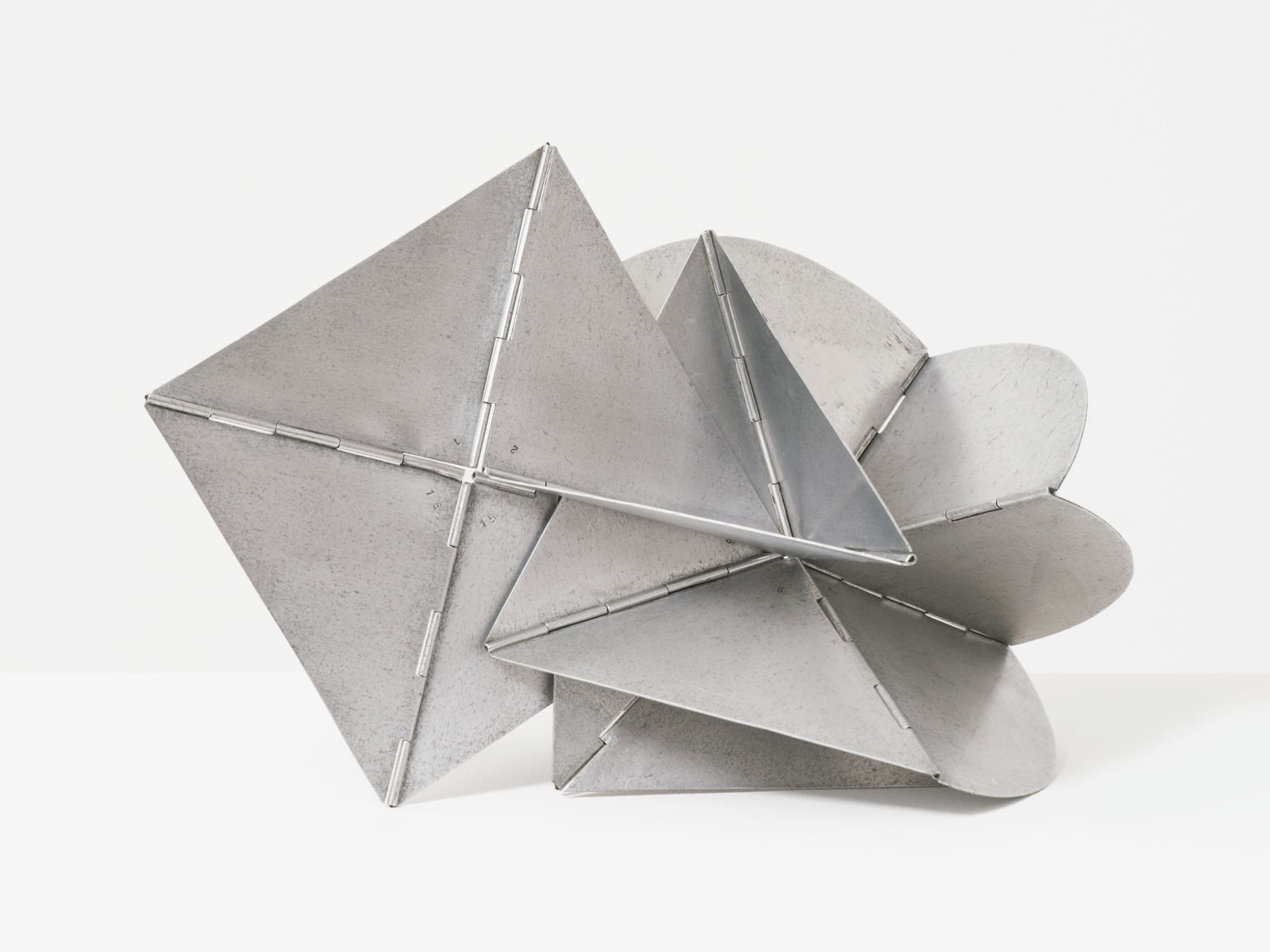




Lygia Clark
Bicho / Critter, 1960
Aluminium
21 x 18 x 20 cm, 8 1/4 x 7 1/8 x 7 7/8 in (current configuration)
Installation dimensions variable
Installation dimensions variable
© Associação Cultural O Mundo de Lygia Clark
Further images
The Bicho series, initiated in the 1960s, marks a crucial phase in Lygia Clark’s (1920 - 1988) practice. The word bicho—Portuguese for “critters” or small animated creatures—aptly describes these hinged...
The Bicho series, initiated in the 1960s, marks a crucial phase in Lygia Clark’s (1920 - 1988) practice. The word bicho—Portuguese for “critters” or small animated creatures—aptly describes these hinged metal sculptures that are designed to come to life through viewer interaction.
This unique maquette is constructed from hinged aluminum planes, intended by Clark to be manipulated by the “spectator.” As a result, its dimensions vary, with multiple possible configurations depending on how the viewer engages with it.
Clark’s process began with balsa wood studies before she personally crafted each Bicho maquette in metal in her studio. These original maquettes remain unique, handmade works by Clark herself. Larger-scale versions were fabricated following her precise instructions and issued as Editions of 5 + 1 Artist Proof. Thus, the maquettes stand apart as one-of-a-kind, tangible manifestations of her vision.
Through the Bicho, Clark furthered her investigation of form transitioning from the pictorial plane into three-dimensional space. Beyond formal innovation, Clark’s fascination with psychoanalysis informed her evolving use of objects as tools for exploring body and mind. Between 1976 and 1984, she shifted from creating “sensory” objects to “relational” works, engaging in therapeutic sessions aimed at structuring the self. At her Rio residence, Clark held sessions with clients, guiding them through regression to primal states using her objects to explore the body’s fantasy dimension.
This unique maquette is constructed from hinged aluminum planes, intended by Clark to be manipulated by the “spectator.” As a result, its dimensions vary, with multiple possible configurations depending on how the viewer engages with it.
Clark’s process began with balsa wood studies before she personally crafted each Bicho maquette in metal in her studio. These original maquettes remain unique, handmade works by Clark herself. Larger-scale versions were fabricated following her precise instructions and issued as Editions of 5 + 1 Artist Proof. Thus, the maquettes stand apart as one-of-a-kind, tangible manifestations of her vision.
Through the Bicho, Clark furthered her investigation of form transitioning from the pictorial plane into three-dimensional space. Beyond formal innovation, Clark’s fascination with psychoanalysis informed her evolving use of objects as tools for exploring body and mind. Between 1976 and 1984, she shifted from creating “sensory” objects to “relational” works, engaging in therapeutic sessions aimed at structuring the self. At her Rio residence, Clark held sessions with clients, guiding them through regression to primal states using her objects to explore the body’s fantasy dimension.
Provenance
The ArtistEstate of Lygia Clark




